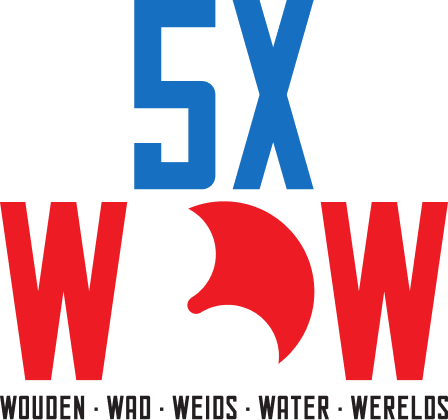Curious about the surroundings of Lauwersmeer National Park?
In earlier times, fresh and saltwater merged in the Lauwerszee. Fear of floods led to the construction of a dam in 1969. This resulted in the creation of a beautiful new expansive landscape on the former seabed, a true bird paradise. The nature in the Lauwersmeer is so exceptional that the area has been designated as a National Park.
This route starts at the Lauwersnest activity center in Lauwersoog (De Rug 1). From there, we will guide you through the main points that tell a beautiful and interesting story.
De route
Start route
De Rug 1 9976 VT Lauwersoog
World Heritage Wadden Sea Center
The new World Heritage Wadden Sea Center (opening in spring 2025) will become the ultimate experience and research center in the fishing port of Lauwersoog. The Wadden Sea area is listed as a UNESCO World Heritage Site and is the only natural World Heritage Site in the Netherlands. In the building, you can find amenities such as restaurants, experience spaces, and seal pools.
Esonstad
In the early Middle Ages, the city of Ezonstad is believed to have been located at this site. It was a place intended to protect Friesland from the Normans. However, the town no longer has any historic buildings. Esonstad is now a holiday park that was completed in 2007.
Ezumazijl, connection to Lauwersmeer
Ezumazijl is a small hamlet on the Zuider Ee. The river flows into the Lauwersmeer here. "Zijl" is old Dutch for sluice. The sluice in Ezumazijl dates back to 1671 and served as a sea defense until the damming of the Lauwerszee to create the Lauwersmeer in 1969. South of Ezumazijl stands the polder mill "De Goes" ("The Goose" in Dutch), built in 1850.
Dokkumer Nieuwe Zijlen
At the sluices and inn from 1729, now lies the hamlet of Dokkumer Nieuwe Zijlen. The old sea sluices were designed by Willem Loré, a well-known Frisian hydraulic engineer. The sluices of Dokkumer Nieuwe Zijlen also served as sea sluices until 1969.
Formation of the Lauwersmeer Area
The 1953 North Sea flood led to a distrust of the sea. Plans for delta works and new dikes were put on the agenda. In 1969, the sea arm known as the Lauwerszee was closed off by sluices and a dike, and it has since become a lake. The port of Lauwersoog was built on the Wadden Sea coast.
Fishing Museum Zoutkamp
In the Fishing Museum, you can explore the history and development of fishing in Zoutkamp. The museum is housed in the old Buoy Shed of the Rijkswaterstaat. Next to the museum stands an original fisherman's cottage from 1900, furnished as it would have been for a traditional Zoutkamp fishing family.
Nightlife
Lauwersmeer National Park is one of 42 'Dark Sky' parks worldwide, a place with virtually no artificial light. Especially during the winter, it is one of the darkest places in the Netherlands. On clear nights, the Milky Way is clearly visible. In the park, you can lie on special 'sky platforms' under the starry sky.
Trek of the Spoonbill
From February to September, the 90-centimeter-long spoonbills - named after their spoon-shaped bill - can be found in the Lauwersmeer area. Spoonbills nest in marshy areas and among reed beds. They can live for about 28 years and always return to the exact place where they were born after the winter.
Orchids in the Lauwersmeer area
In the Lauwersmeer area, you can admire no fewer than 12 different species of orchids, including some seriously endangered ones. Especially from June to August, the blooming orchids color the fields of the nature reserve.
Einde route
De Rug 1 9976 VT Lauwersoog
